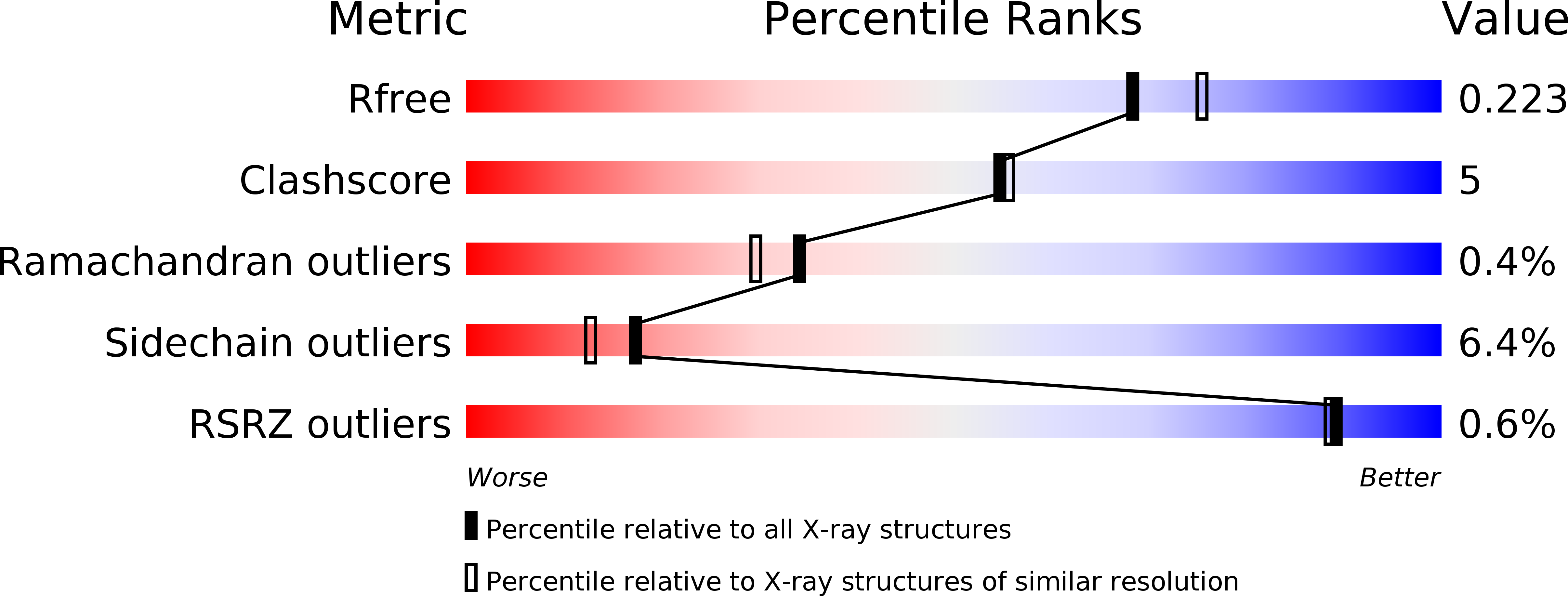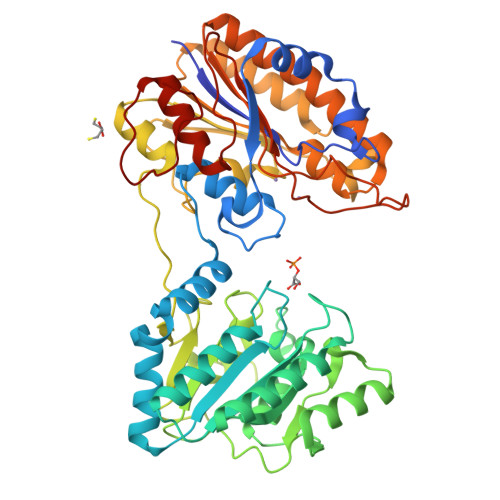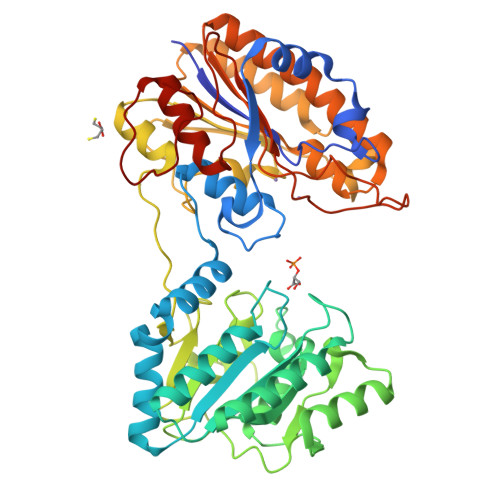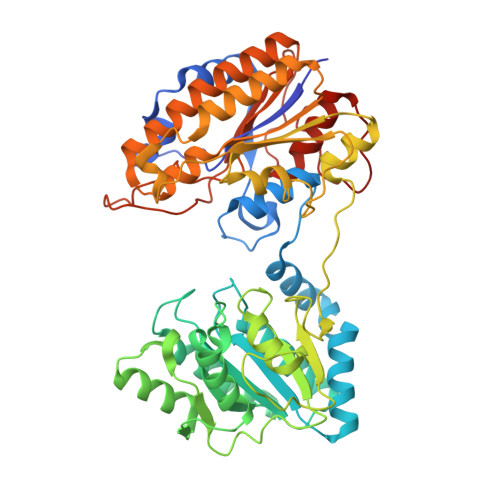Complete catalytic cycle of cofactor-independent phosphoglycerate mutase involves a spring-loaded mechanism
Roychowdhury, A., Kundu, A., Bose, M., Gujar, A., Mukherjee, S., Das, A.K.(2015) FEBS J 282: 1097-1110
- PubMed: 25611430
- DOI: https://doi.org/10.1111/febs.13205
- Primary Citation of Related Structures:
4MY4, 4NWJ, 4NWX - PubMed Abstract:
Cofactor-independent phosphoglycerate mutase (iPGM), an important enzyme in glycolysis and gluconeogenesis, catalyses the isomerization of 2- and 3-phosphoglycerates by an Mn(2+)-dependent phospho-transfer mechanism via a phospho-enzyme intermediate. Crystal structures of bi-domain iPGM from Staphylococcus aureus, together with substrate-bound forms, have revealed a new conformation of the enzyme, representing an intermediate state of domain movement. The substrate-binding site and the catalytic site are present in two distinct domains in the intermediate form. X-ray crystallography complemented by simulated dynamics has enabled delineation of the complete catalytic cycle, which includes binding of the substrate, followed by its positioning into the catalytic site, phospho-transfer and finally product release. The present work describes a novel mechanism of domain movement controlled by a hydrophobic patch that is exposed on domain closure and acts like a spring to keep the protein in open conformation. Domain closing occurs after substrate binding, and is essential for phospho-transfer, whereas the open conformation is a prerequisite for efficient substrate binding and product dissociation. A new model of catalysis has been proposed by correlating the hinge-bending motion with the phospho-transfer mechanism.
Organizational Affiliation:
Department of Biotechnology, Indian Institute of Technology, Kharagpur, India.



















